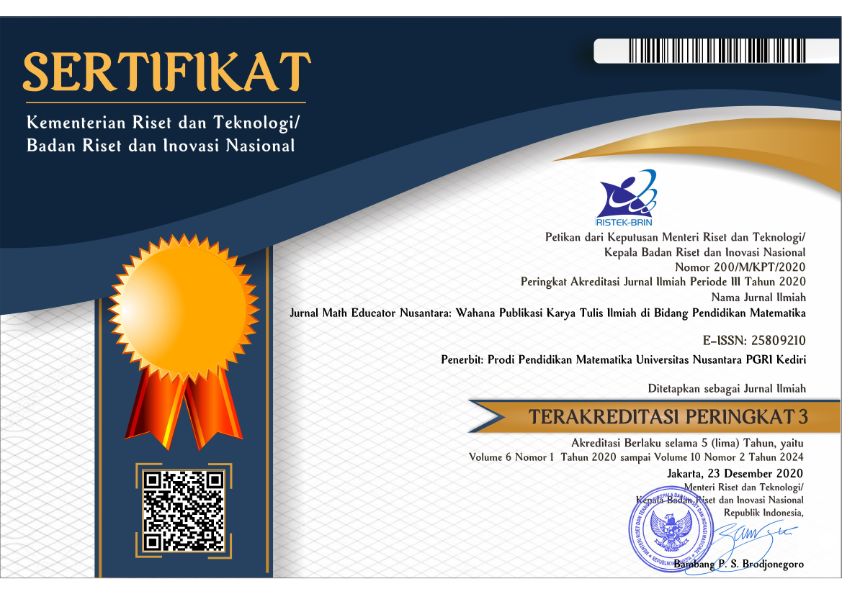PENGARUH MODEL PEMBELAJARAN BERDASARKAN MASALAH TERHADAP KEMAMPUAN BERPIKIR KREATIF MATEMATIS SISWA DITINJAU MENURUT GENDER SISWA SD NEGERI TAROKAN KEDIRI
DOI:
https://doi.org/10.29407/jmen.v1i1.126Abstract
Penelitian ini bertujuan ingin mengetahui: (1) bahwa kemampuan berpikir kreatif matematis siswa yang diajar menggunakan model PBM lebih baik daripada model pembelajaran konvensional; (2) perbedaan kemampuan berpikir kreatif matematis siswa ditinjau menurut gender; (3) Apakah ada interaksi antara model pembelajaran berdasarkan masalah dengan gender terhadap kemampuan berpikir kreatif matematis siswa. Berdasarkan eksperimen diperoleh hasil bahwa (1) kemampuan berpikir kreatif matematis siswa yang diajar menggunakan model pembelajaran PBM lebih baik daripada model pembelajaran konvensional, (2) kemampuan berpikir kreatif matematis siswa laki-laki lebih baik daripada kemampuan berpikir kreatif matematis siswa perempuan; (3) ada interaksi antara model PBM v.s. pembelajaran konvensional dengan gender terhadap kemampuan berpikir kreatif matematis siswa.
Kata Kunci: Pembelajaran berdasarkan masalah, berpikir kreatif matematis, gender.
Downloads
Published
Issue
Section
License
Authors who publish with this journal agree to the following terms:
- Copyright on any article is retained by the author(s).
- The author grants the journal, the right of first publication with the work simultaneously licensed under a Creative Commons Attribution License that allows others to share the work with an acknowledgment of the work’s authorship and initial publication in this journal.
- Authors are able to enter into separate, additional contractual arrangements for the non-exclusive distribution of the journal’s published version of the work (e.g., post it to an institutional repository or publish it in a book), with an acknowledgment of its initial publication in this journal.
- Authors are permitted and encouraged to post their work online (e.g., in institutional repositories or on their website) prior to and during the submission process, as it can lead to productive exchanges, as well as earlier and greater citation of published work.
- The article and any associated published material is distributed under the Creative Commons Attribution-ShareAlike 4.0 International License
















